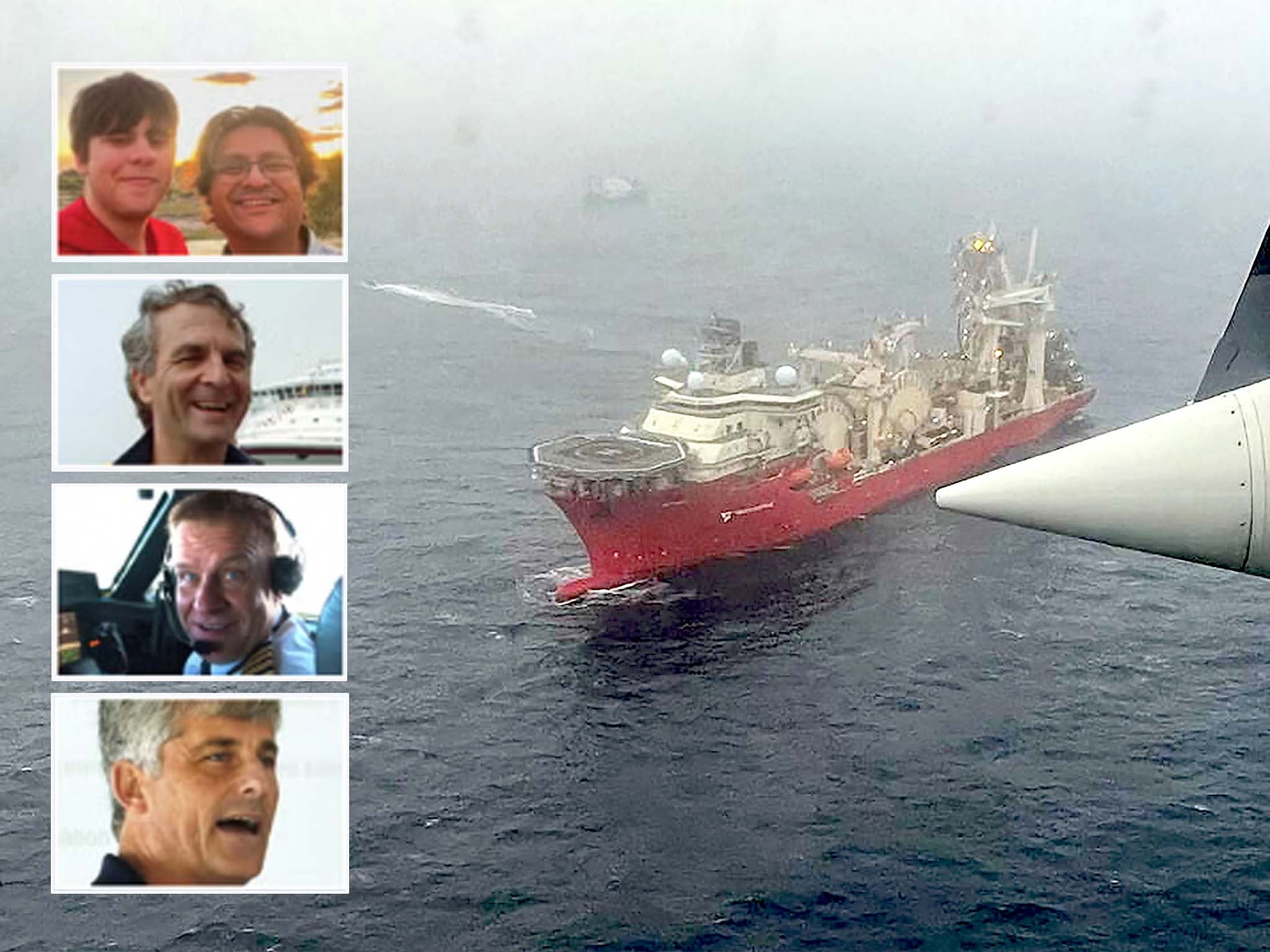Daughter of French pilot on Titanic sub says if he died he would be ‘where he loved’
Sidonie Nargeolet says she is living with ‘a lot of stress, very mixed emotions’

The daughter of one of the five people inside the submersible missing near the wreck of the Titanic said she continued to hope they would be rescued but that she is comforted by the knowledge that her father, oceanographer Henri Nargeolet, is in the place he loved most.
Sidonie Nargeolet said she was living with “a lot of stress, very mixed emotions” as the desperate search for the missing submersible near the wreck of the Titanic entered a critical phase, when air was expected to run out for the five people aboard.
“At times, I have a lot of hope, I am fine, I believe and have a lot of hope. But in others, hope goes away and it is hard to endure, and as more time goes by it gets harder,” she said.
Follow updates on the missing Titanic sub in our live blog here
The US Coast Guard announced that a debris field had been found at the bottom of the ocean near the Titanic, after the critical 96-hour mark when breathable air could have run out passed without the sub having been traced.
A Canadian aircraft searching for the sub in the Atlantic Ocean had detected intermittent “banging” noises from the vicinity of its last known location.
Ms Nargeolet, 39, said her father was very passionate about the Titanic. “I know now he is at the place he would like to be,” she said.
Colleagues of Mr Nargeolet describe him as a leading expert on the Titanic, with more than 35 dives to the wreck under his belt after a two-decade career in the French navy.
His daughter said she learnt about the accident on Monday, when she received a text message from her father’s spouse saying he should have been back at 6 pm on Sunday.
“I cried a lot,” she said. She had last seen her father just before Christmas last year in Andorra.
“He sent me a message a week before (getting in the submersible) telling me the weather was bad, so they hadn’t been able to go down, but that there was a great atmosphere,” she said. “I sent him a message on Sunday for Father’s Day but he didn’t reply.”
Ms Nargeolet said her father had made his first trip to the wreck in 1987. On one trip in another vessel operated by US-based OceanGate Expeditions, he told her that he was not sure he would return safely, although he eventually did.
“He knows how to handle a crisis situation. He is prepared for it.
“Here, I think that with the other people he would have explained to them, therefore, to breathe gently, so that we use less oxygen. And we also knows how to reassure them, that’s very important. Maybe kick the submarine, so they can hear it,” she said.
“Sometimes I don’t check (the news) because I don’t want to hear them saying that they now have very low oxygen.

“I prefer to listen to positive things, to hope, that they will continue looking for them,” she said, adding she felt relieved knowing her 77-year-old father’s vast experience underwater.
But she was realistic about time running out.
She added: “If they are not found, it will be very sad for us because we will not see him again.
“What he liked the most was to be in a submarine, (near) the Titanic. He is where he really loved being.
“I would prefer him (dying) at a place where he is very happy,” Ms Nargeolet said, struggling to hold back her tears.
The Coast Guard said the debris was discovered within the search area by a remotely operated underwater robot, and was being evaluated.
Jamie Pringle, an expert in forensic geosciences at Keele University, said even if the noises came from the submersible, “The lack of oxygen is key now; even if they find it, they still need to get to the surface and unbolt it.”
The Titan lost contact with its surface vessel 435 miles south of St John’s, Newfoundland, as it was on its way to where the ocean liner sank more than a century ago.
OceanGate Expeditions, which is leading the trip, has been chronicling the Titanic’s decay and the underwater ecosystem around it via yearly voyages since 2021.
By Thursday morning, hope was running out that anyone on board the vessel would be found alive.
Join our commenting forum
Join thought-provoking conversations, follow other Independent readers and see their replies
Comments



Bookmark popover
Removed from bookmarks